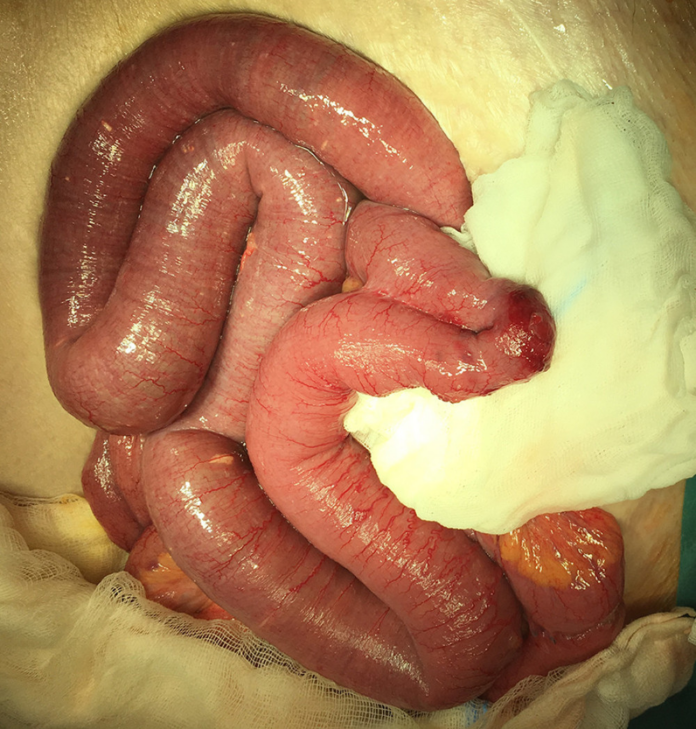- Obturator hernia is an uncommon sybtype of hernia and represents 0.07-1% of all cases of abdominal hernias.
- Incarceration of the hernia is causes, rarely, because of intestinal obstruction.
- The incidence is seen to be higher in elderly women from Asia countries, who are either malnourished or multiparous.
A 93-year-old, malnourished, institutionalised woman presented to the emergency department with intense abdominal pain in the right iliac fossa radiating to the right thigh. Other signs included episodes of dark-coloured vomiting. However, with normal bowel transit. Doctors diagnosed the patient with small bowel obstruction because of an incarcerated obturator hernia.
The patient’s medical history was significant for a strangulated right Richter’s femoral hernia, right femoral hernioplasty and a previous intestinal resection. On physical examination, the patient was conscious, collaborative and oriented with no signs of respiratory distress. She was hemodynamically stable with no signs of fever. On abdominal palpation, there was pain and tenderness in the right iliac fossa, although with normal bowel sounds. She was positive for Howship-Romberg sign which indicated obturator nerve irritation. This results in inner thigh pain that may also extend to the knee.
Diagnosis: obturator hernia
Laboratory investigations showed that the patient had mild leukocytosis and neutrophilia with elevated dehydrogenase. Doctors further advised a plain abdominal radiograph which showed some distended bowel loops with multiple central air-fluid levels. The findings are consistent with the diagnosis of small bowel obstruction. The patient further underwent an abdominal-pelvic computed tomography which showed an incarcerated right obturator hernia containing a segment of the small intestine.
Doctors referred the patient for urgent surgery. During exploratory laparotomy, the viability of the incarcerated intestine was verified. There were no signs of ischemia or necrosis. The findings were consistent with the diagnosis of obturator hernia. Treatment included a hernioplasty. The patient had a favourable recovery and was discharged on the 5th day after the procedure. On follow-up, there were no visible concerns or complications.
Source: American Journal of Case Reports




